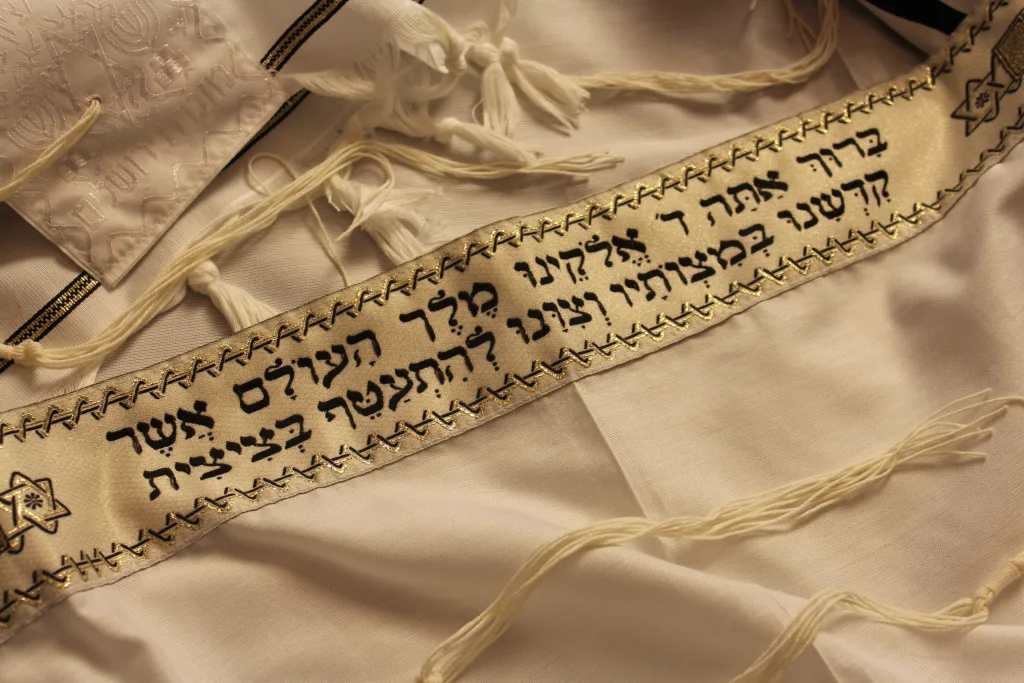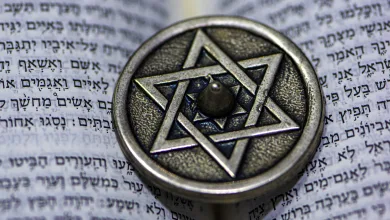Judaism Historical Development

What makes a person Jewish? This seemingly basic question is not so easy to answer, even for Jewish people.
For most particular faiths described in this book, a person identifies either by birth—into a family belonging to that religion—or by adherence (even nominally) to its beliefs and practices. While that is true for some Jewish people, many who identify as Jewish practice no religion, or practice one other than Judaism.
So for some, being Jewish is more about ethnicity or family traditions than religious beliefs. Generally, if one has a Jewish mother, one is considered Jewish. On the other hand, a few people who are not ethnically Jewish convert to Judaism through profession of belief in its teachings.
So what follows is primarily a description of the religion. Many who self-identify as Jewish do not hold these beliefs or follow these practices.
Judaism traces its origins to Abraham or, more properly, to his great-grandchildren: the Twelve Patriarchs, the sons of Jacob, whose name God changed to Israel. Genesis gives little detail about the religious practices of Abraham and his descendants. God established a covenant with him (see Genesis 12), and we read of his sincere faith and the offering of animal sacrifices, but it is not until hundreds of years later, when Moses receives the Law on Mount Sinai, that Judaism begins to take shape.

The Exodus and the Mosaic Law are foundational to the establishment of Israel as a nation and Judaism as a religion in the formal sense.
Although the priests maintained the tabernacle and its services during and after Israel’s conquest of Palestine, the biblical record in the books of Joshua and Judges indicates that not all the people actively practiced their faith. Many began to follow the religious practices of the surrounding nations, and this persisted in Israel for nearly a thousand years.
After the period of the monarchy began, and especially after the temple’s construction by Solomon, most religious rituals took place in Jerusalem, and the Law’s sacrificial system was centered in the temple. The subsequent division of the nation into two kingdoms (Northern/Israel and Southern/Judah) contributed to ongoing pluralism and syncretism. Religious observance by the masses grew or declined based on the current king’s spiritual fervor. Godly kings, unfortunately, were few in Judah and virtually nonexistent in Israel.
Much of the Hebrew Scriptures (known to many as the Bible’s Old Testament) describe this spiritual decline and the warning messages God sent through a number of prophets. Eventually, the predicted judgment came.
Israel was conquered initially by the Assyrians, and the people were taken into exile. In 586 BC, the Babylonians destroyed Jerusalem and its temple and took most of the surviving inhabitants into exile. This period was significant in the development of modern Judaism.
First, without the temple and the sacrificial system, new worship forms were developed, along with a theology to support them. Second, the people of Judah were now a minority in a foreign land; this, too, impacted theological thinking. Third, because the exiled people were from the land of Judah, they were first called Jews during this period. Last, although precise dates are unknown, the development of synagogues and rabbis began around this time.
After the Persians conquered the Babylonians, the Jewish exiles were allowed to return to Jerusalem and rebuild the temple, yet historians estimate only 10 percent went back to Palestine. As a colony, first of the Persians, then the Greeks, and finally the Romans, the Jewish people were generally free to practice their faith, but all three colonizing nations, especially the Greeks, exerted considerable influence on Jewish culture and religion. One result was a Greek-language translation of the Jewish Scriptures called the Septuagint.
Rome’s destruction of Jerusalem and the second temple brought an end to national Israel, even in a colonized form, until the modern state was formed in AD 1948. It also brought major changes to Jewish religious practice. Scattered throughout Europe and Asia (called the diaspora), a decentralized Judaism developed around the synagogue and the rabbi. With no new revealed Scripture for nearly five hundred years, no temple, no priesthood, and no sacrificial system, the rabbis began to think, debate, and write about how to keep the Law in the face of these new realities.
These writings, called the Mishnah, were compiled around AD 200, though much of their content had existed as oral tradition for several centuries. Further rabbinic writings, more applicational in nature (in general terms answering the how rather than what of the Mishnah), were compiled over the next several hundred years to become the Gemarah. Their combination is called the Talmud, which has both Palestinian and Babylonian versions and is the primary basis of modern Judaism (see chapter 12).
One last factor that has shaped Jewish life and theology over the past two millennia is persecution. The Roman emperors, the pogroms of medieval Europe, the czars and Stalin in Russia, the holocaust of Hitler’s Germany—these only represent the best-known examples of anti-Semitism.
The Jewish people have faced it all, from job discrimination to outright genocide. It’s amazing that given the current Arab-Israeli conflict, for many centuries Jewish people usually found more welcome in Muslim lands than in Christian Europe. All of this has shaped modern Judaism’s beliefs and practices, and anti-Semitism is still a chief concern for Jewish people today.
An Extra Minute
In the gospel accounts, Jesus often comes into verbal conflict with the scribes and the Pharisees. These groups attempted to strictly follow the Law but differed with Jesus (and often with each other) over correct interpretation and application. They also tended toward legalism and put the finer points of behavior above the attitude of the heart. Many of the oral traditions they followed ultimately were written down, and these scholarly opinions found their way into the Mishnah.
Morgan, G.R. (2012) Understanding World Religions in 15 Minutes a Day. Minneapolis, MN: Bethany House Publishers, pp. 54–57.




